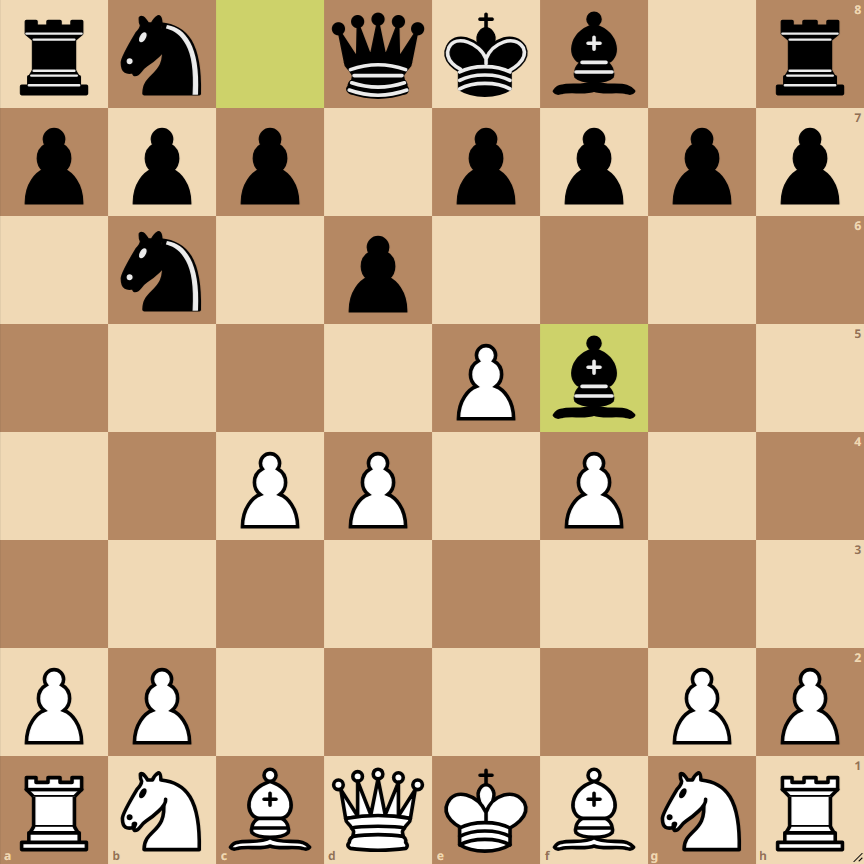How to Play the Alekhine Defense Four Pawns Attack Trifunovic Variation

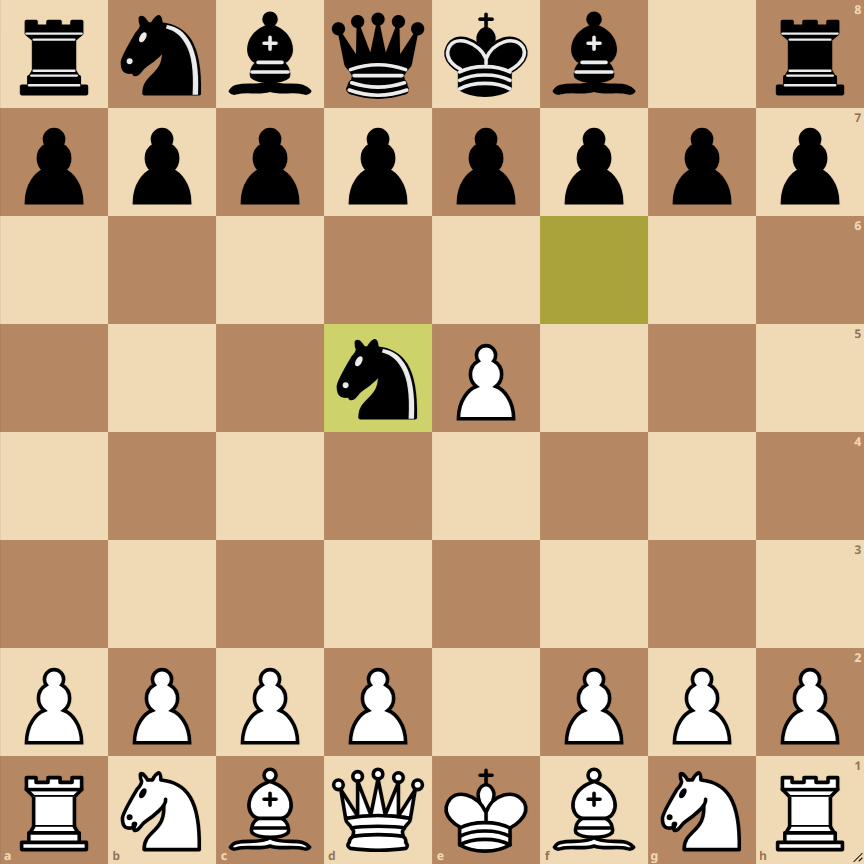
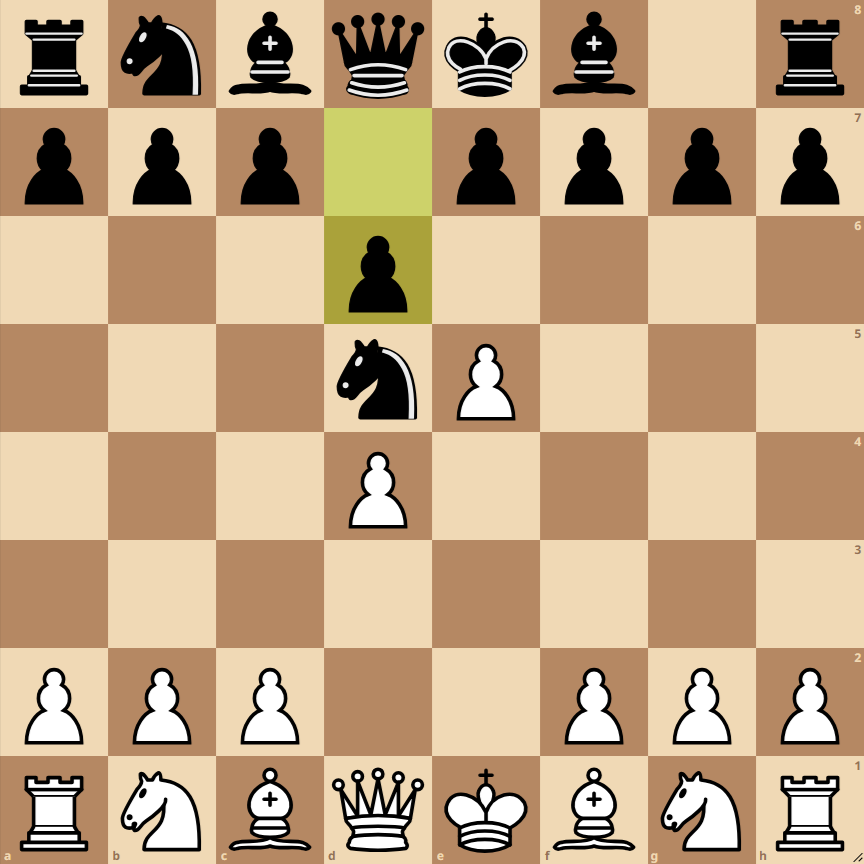
- 1. e4: White opens with the king’s pawn, controlling the center and preparing for the development of the bishop and queen.
- 1… Nf6: Black responds with the knight to f6, attacking the e4 pawn and starting to contest the center.
- 2. e5: White advances the pawn to gain space in the center and displace the black knight.
- 2… Nd5: The black knight retreats to d5, maintaining pressure in the center and preparing for further development.
- 3. d4: White strengthens the center with another pawn, controlling key squares and preparing for the development of minor pieces.
- 3… d6: Black counterattacks in the center, aiming to undermine the white e5 pawn.
- 4. c4: White advances another pawn, attacking the knight on d5 and aiming to dominate more central space.
- 4… Nb6: The black knight retreats to b6, freeing the queen and bishop and maintaining pressure in the center.
- 5. f4: White continues their aggressive pawn play, supporting e5 and preparing for the development of the king’s bishop.
- 5… Af5: The black bishop develops to f5, pressuring the white c4 pawn and preparing for castling.
Variations of the Alekhine Defense Four Pawns Attack Trifunovic Variation
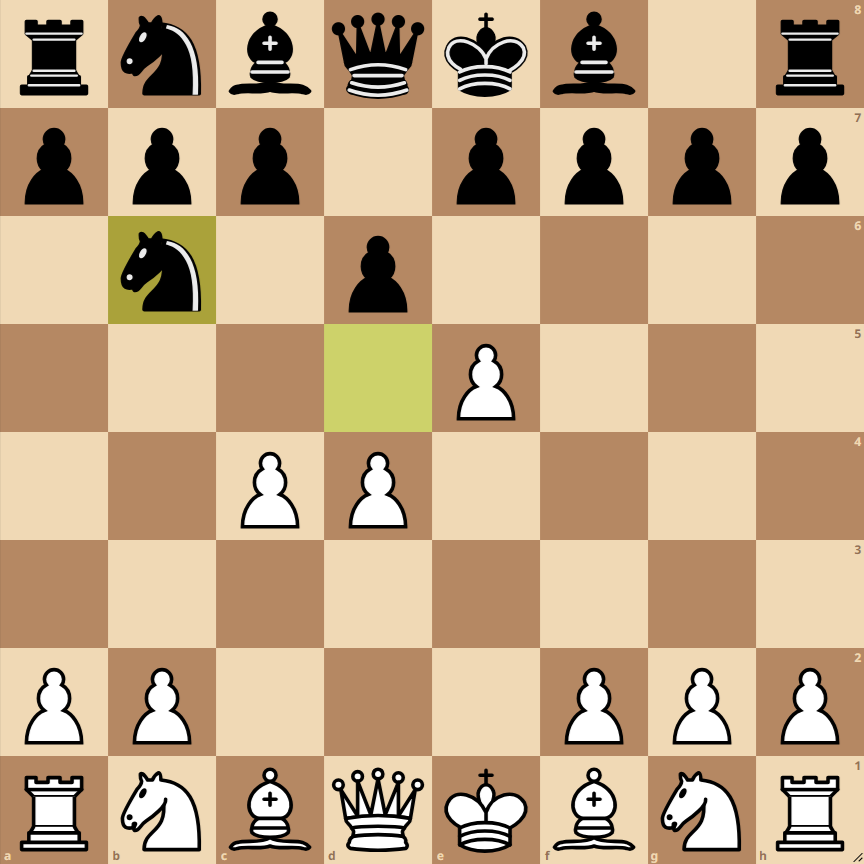
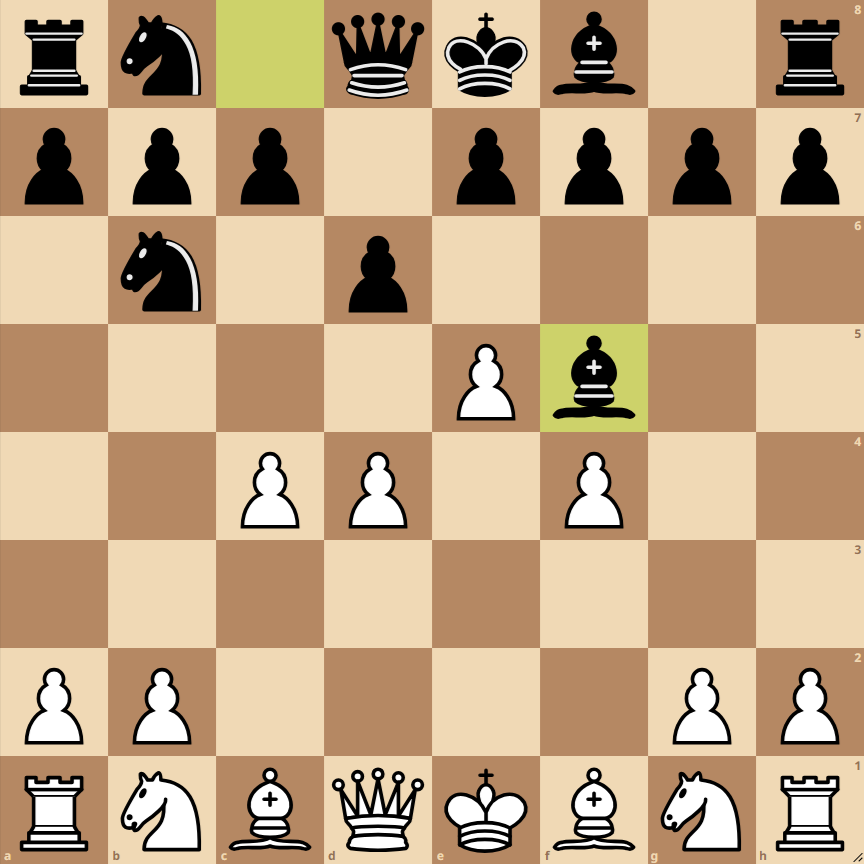
Variation 5… g6
This variation aims to develop the king’s bishop to g7, where it can exert pressure in the center. This line is less direct but aims for a more solid pawn structure for Black.
Variation 5… e6
With 5… e6, Black seeks to open lines for their queen’s bishop and prepare the development of their pieces on the queen’s side. This move also allows some flexibility in castling.

